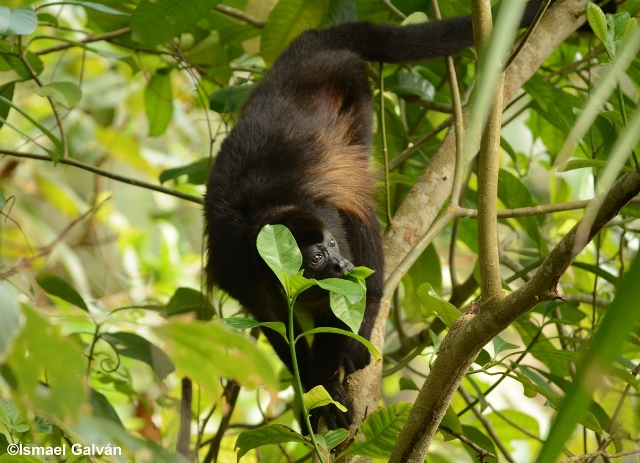The colors of primates are among the most diverse phenotypes in mammals. These colors are mostly produced by the deposition of melanin pigments in hairs. Many species show considerable variability in pigmentation, but this is always temporarily fixed. Here the first rapid change in the pigmentation phenotype of a primate is reported. In the last five years, the pelage of mantled howler monkeys Alouatta palliata inhabiting Costa Rica has started to change from fully black to yellowish, constituting a conspicuous color change. Raman spectroscopy analyses of hairs show that the change is due to a shift toward the production of the sulphurated form of melanin, termed pheomelanin. Most animals with anomalous coloration have been observed in forests surrounding intensive cultivations where sulfur-containing pesticides are frequently used. Exposure to environmental sulfur may increase the availability of sulfhydryls to cells, which may favor pheomelanin synthesis in melanocytes and explain the pigmentation shift. informacion[at]ebd.csic.es: Galván et al (2018) A recent shift in the pigmentation phenotype of a wild Neotropical primate. Mammalian Biol. Doi 10.1016/j.mambio.2018.10.007
https://www.sciencedirect.com/science/article/pii/S1616504718302374?via=ihub

 Las altas temperaturas están provocando que las lagunas y las marismas de Doñana pierdan agua rápidamente
Las altas temperaturas están provocando que las lagunas y las marismas de Doñana pierdan agua rápidamente




